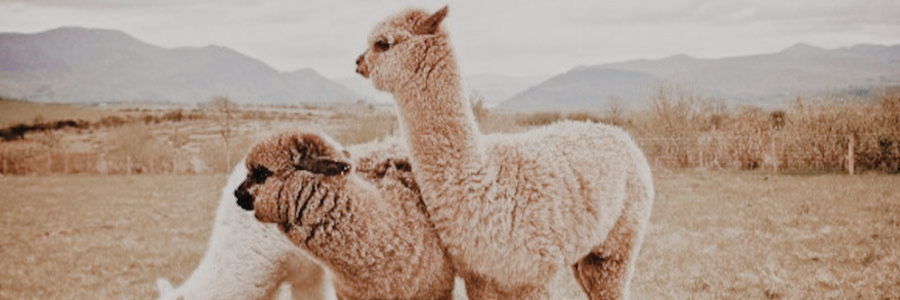Cashmere scarf
Winter is coming soon which means the return of big sweaters, boots but also scarves, an essential part of our dressing room! But what are the right things to do to avoid getting sick and being warm? There is nothing like choosing a cashmere scarf, elegant, thin, and ultra-warm, you must have such a scarf in your wardrobe!
Today, in this article we will talk to you about cashmere and its virtues. Cashmere is a natural fibre that produces warmth and softness. Despite its virtues, cashmere also has some disadvantages, particularly in terms of ecology, production, and characteristics... Is there a more ecological and eco-responsible alternative? Let's discover the whole thing!

What is cashmere?
Cashmere is a very fine animal fibre (from 19 to less than 12 microns), very soft, and obtained from cashmere goats at the end of winter. The latter is smaller and rounder than the goats we usually know and its horns are twisted. Originally from Kashmir, the Himalayan highlands of Ladakh and Tibet, the Kashmir goat has a thick woolly fleece covered with long hairs that helps it protect itself from the extreme cold of up to -40° in these regions.
As for producing in this noble and elegant way, it is nowadays in China and Mongolia that we find the largest cashmere production centers. These two countries produce, among other things, three-quarters of the wool manufactured in the world. Each year, 20,000 tonnes of cashmere are produced.
Cashmere Scarf
Cashmere scarves are excellent fashion accessories that you can wear in both summer and winter. In addition to its fluidity, the different colours of this material offer you the possibility to have a cashmere scarf that easily matches all your outfits. Then, the flexibility of a cashmere scarf allows you to tie and wear it in a thousand and one different ways. Enough to revive and give pep to your looks. Cashmere scarves are worn by both men and women and are timeless. The cashmere scarf is a safe, authentic, and elegant value.
A fibre even better than cashmere: alpaca fibre
For the record... it should be noted that Alpaca and the "Kashmir goat" are two very cute domesticated animals but not living in the same places. The Alpaca lives mainly in Latin America in the Andes Cordillera. As for the Kashmir goat, it lives mainly in Mongolia and China.
Why is Alpacas said to be more eco-responsible than Kashmir goats?
Quite simply because its breeding is much more ecological. Everything can be explained by the way they eat. Alpacas are much less greedy than goats, they do not tear off the root of the grass when it grazes it. He's just going to cut it off. The regrowth of grass is therefore easier and, above all, faster. The Kashmir goat, like sheep, tears off the roots of the grass by eating it. In addition, Alpaca with its small foot pads do not damage the soil, which is, therefore, better preserved. Something that Kashmir goats have trouble with because of their hooves are large and heavy.
Another virtue of the Alpaca (and yes... it never ends! This animal is definitely perfect...), its waste can be used as a natural fertilizer. Not bad, is it?
So what is the problem?
The problem is such that global cashmere production continues to increase due to high demand. As a result, this is a major environmental concern. On the one hand, this leads to intensive goat breeding, which in turn means intensive goat breeding means strong soil degradation....
This production is all the more expensive when you know that to obtain the same quantity of raw material, cashmere will require much more goat than alpaca fibre will require alpacas. A Kashmir goat produces more or less 150 grams of fibre per year while an Alpaca produces 2.5 kg.... Impressive!
In addition to producing a larger quantity of wool than goats, alpacas are of a higher quality than cashmere, especially when we talk about the fibre of "Baby Alpaca"... a real little wonder. Baby Alpaca is of incomparable finesse and softness. In terms of resistance over time, Alpaca fibre is once again superior. Moreover, it does not pill, unlike cashmere.
So, conquered? There is only one thing left for you to choose Alpaca fibre over cashmere!
Finally, rather cashmere or alpaca scarf?
That is exactly where we are going with this. Despite all the virtues of cashmere, we cannot deny that alpaca remains much better today. Indeed, alpaca fibre has a natural sheen that surpasses the dull appearance of cashmere. The many qualities of alpaca fibre will also allow a greater variety of clothing to be produced in various colours.
When it comes to maintaining these fibres, alpaca remains clean for longer, unlike cashmere fibre, which retains odours more easily. As a result, cashmere requires more frequent cleaning, which causes much more damage to the clothing. Secondly, it should be noted that moths love the fibre of cashmere goats.
Another disadvantage of cashmere is that it lint much faster and easier than alpaca fibre, which reduces its life span. From this point of view, alpaca fibre far exceeds the qualities of cashmere.
Finally, cashmere and again, unlike alpaca, does not retain moisture. The thermal and thermoregulatory properties of alpaca are therefore unbeatable. Cashmere goat fibre has a relatively low moisture absorption rate (15%) or a dry garment = comfort for the wearer.
Here are all the reasons why alpaca fibre is internationally recognized as one of the finest and most luxurious fibres in the world. It is certainly not for nothing that the Incas called it "The wool of the Gods".
So don't hesitate any longer between cashmere and alpaca and opt for this amazing fibre with incomparable virtues...
For more information, check out our website and online shop www.bellepaga.com or join our sweet community.
Facebook: Bellepaga
Instagram: bellepaga














